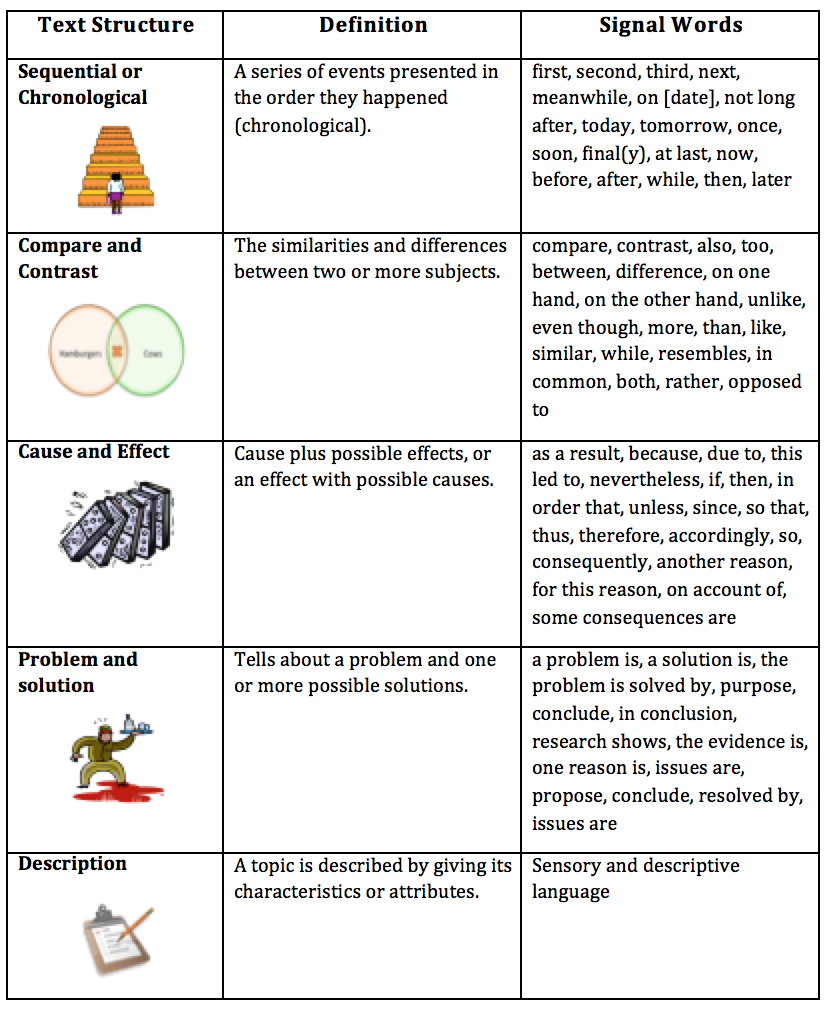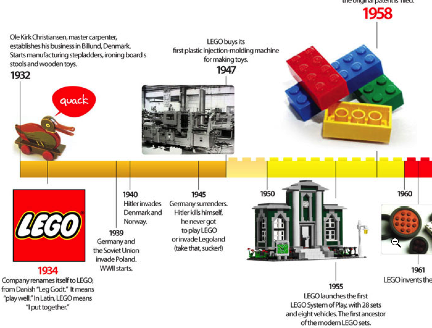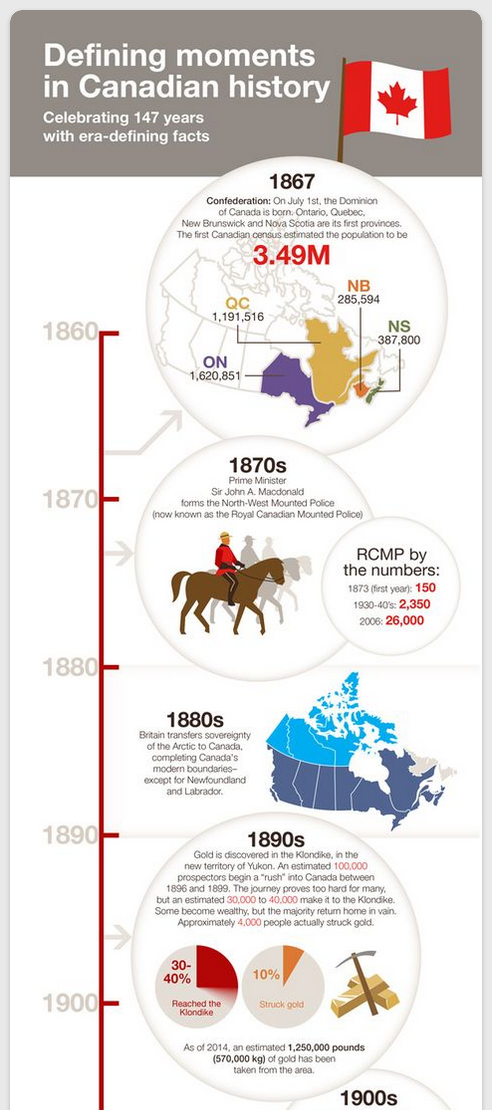3.8 More About Text Structures
| Site: | Cowichan Valley School District - Moodle |
| Course: | ELA5, CSS, Sferrazza |
| Book: | 3.8 More About Text Structures |
| Printed by: | Guest user |
| Date: | Monday, 5 January 2026, 5:11 AM |
Learning Target
By the end of this lesson, you should be able to say YES to the following question.
- Can I apply thinking skills to gain meaning from text?
- Can I recognize an increasing range of text structures and how they contribute to meaning?
- Can I use writing and design processes to plan, develop, and create texts for a variety of purposes and audiences?
- Can I transform ideas and information to create an original paragraph?

Review
In the last lesson, you explored five nonfiction text structures. You matched their definitions to their names and looked at examples of each structure. Let's review. Notice the signal words. Those are "hints" that can help you to identify a structure. Understanding structures can help you to understand an author's purpose.

Text Structure Scramble and Sort 2
To practise understanding the nonfiction text structures you were introduced to in the last lesson, take out your Text Structure Scramble and Sort from last day. (Set aside the description and it's definition - Features, characteristics, or attributes of a topic are given.... This was the focus of unit 1 so the other's will be the focus now.) In your Learning Guide, you will find some sample text cards to cut out and add to the mix. See if you can match all the text structure name, text structure definition, and find one or two sample text cards to go (cut out today) to go with each one.
Do this now. When you are done, turn the page in this online book to compare your results.

Results
Compare your findings with the ones on the table. Notice the underlined words that show how signal words have given hints as to the text structure.
|
SEQUENTIAL OR CHRONOLOGICAL |
|
Shows events in order or explains steps one must follow
first, next, after, before,last, following |
|
When a cat is hungry, first he will look for his master. Then he will sit next to his dish until he gets fed. A baby may first toss and turn when she is put in a crib for a nap. Second, she may cry. Not long after that she will likely close her eyes and drift off to sleep. |
|
COMPARE AND CONTRAST |
|
Tells how two or more things are the same (compare) or different (contrast) similar to, as well as, however, on the contrary |
|
Cats are similar to lions. They are both felines. They both have sharp teeth. However, a cat is much smaller than a lion.
|
|
CAUSE AND EFFECT |
|
Shows a relationship between a cause (event) and effect (what happened as a result) consequently, therefore, as a result, because of, due to |
|
Cats often have lots of energy and will play for a long time. As a result, they take many naps. You can tell when a cat is angry. Its ears are laid back and it may hiss. If you don't get enough sleep, then it could affect your memory, ability to pay attention, and performance in school.
|
|
PROBLEM AND SOLUTION |
|
Tells about a problem and gives one or more solutions Consequently, therefore, leads to, because of |
|
Cats sometimes scratch the furniture. One solution is to cover the furniture. If you can't remember dreams, but want to, keep a journal by your bed so that you can record them as soon as you wake up. |
Focus on Sequential Text
Builders use structure to build different kinds of buildings. Writers use different text structures for different purposes. Let's focus on sequential or chronological text. Sequential order is also called chronological order. Chronological order is in time order. (from the Greek "khronos" time) After you have an understanding of this form, you'll explore a variety of texts that use this form.
Take a PEEK at a Terry Fox Article
Take a PEEK at this article on Terry Fox. It is a biography - it tells about his life.
P - Pictures
Before reading the page, look at all the pictures (and captions, if they have them). Looking at the pictures helps to get your brain focused on what the page is about and things that might be important.
E - Each Heading
We know that information is sometimes organized into sections. Reading the titles and headings on the page helps get the brain focused on the information and even hints at what the "main ideas" are.
E - Ending
Sometimes at the end of an article, book, or chapter, there is an "ending" or concluding paragraph that retells important facts or ideas. Reading the ending of a nonfiction text first can help to focus the brain on what is important when reading the text from start to finish.
K - Know
What do you already know about this text? Remember, you haven't read it all yet, but sometimes if you think about what know from your PEEK, then it helps you to better understand what is important when you read the "whole thing".
Get the article:
Turn the page in this online book before reading the article.
First Read
First read: As you read or listen to the following article on Terry Fox, ask yourself:
- How are events organized?
- What is the time span from the first to the last event?
- How does the author signal the change from one even to the next?
- What do all of the events explain?
Listen to the article:
Second Read
For your second read, in your Learning Guide, take point form notes and/or sketch the main ideas for each of the organizers on the chart - the first five sections of the article are available for notes. Don't take down every detail. Focus in on summarizing the main event or idea. Sometimes, you are asked to add lots of descriptive detail. However, for this, you are asked to be concise and precise.
Go to your Learning Guide and find Terry Fox Article.

Don't Look Now
Don't look now, but you've just organized information from the article in the form of a timeline. A timeline allows you to create a visual representation of an event or process by displaying items sequentially along a line. Adding an image for each label makes a timeline more visually appealing.
A timeline can go across the page horizontally:

A timeline can be created vertically:

A timeline can be for a single day or it can cover a huge span of time.
